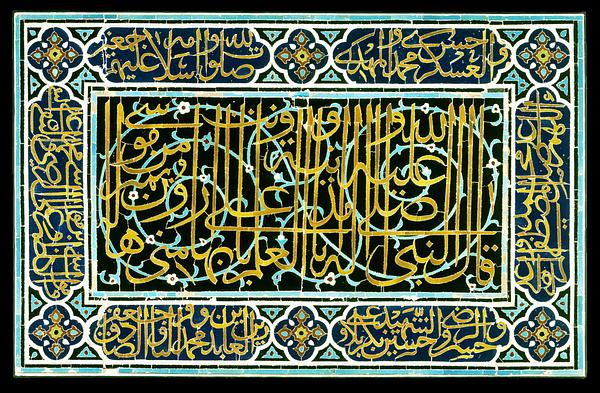Mosaic consisting of pieces of cut, glazed tile
Iran, Isfahan; beginning of 16th century or later
H: 91.5; W: 145 cm
Under the Timurids and Safavids, large parts of the monumental buildings in Iran, Central Asia, and Afghanistan were decorated with colorful tile mosaics like this one. By using pieces cut from individually fired, monochrome ceramic tiles, a far greater variation in color could be achieved than if several glazes had been fired at the same temperature. The richness of color compensated for the time-consuming mosaic technique.
The museum’s panel has a pendant in the Harun Vilayet complex in Isfahan, built in 1512. Technical tests have shown that the panel contains both old and new pieces, and there is no doubt that it has been restored.
Inv. no. 16/1972
Published in:
Christie’s, London, 4/7-1972, lot 185;
André Leth: Davids Samling. Islamisk kunst = The David Collection. Islamic Art, København 1975, pp. 95-96;
Art from the World of Islam. 8th-18th century, Louisiana, Humlebæk 1987, cat.no. 181;
Thomas W. Lentz and Glenn D. Lowry: Timur and the princely vision: Persian art and culture in the fifteenth century, Los Angeles County Museum of Art, Los Angeles 1989, cat.no. 143;
Kjeld von Folsach: Islamic art. The David Collection, Copenhagen 1990, cat.no.160;
Kjeld von Folsach, Torben Lundbæk and Peder Mortensen (eds.): Sultan, Shah and Great Mughal: the history and culture of the Islamic world, The National Museum, Copenhagen 1996, cat.no. 50;
Kjeld von Folsach: Art from the World of Islam in The David Collection, Copenhagen 2001, cat.no. 227;
